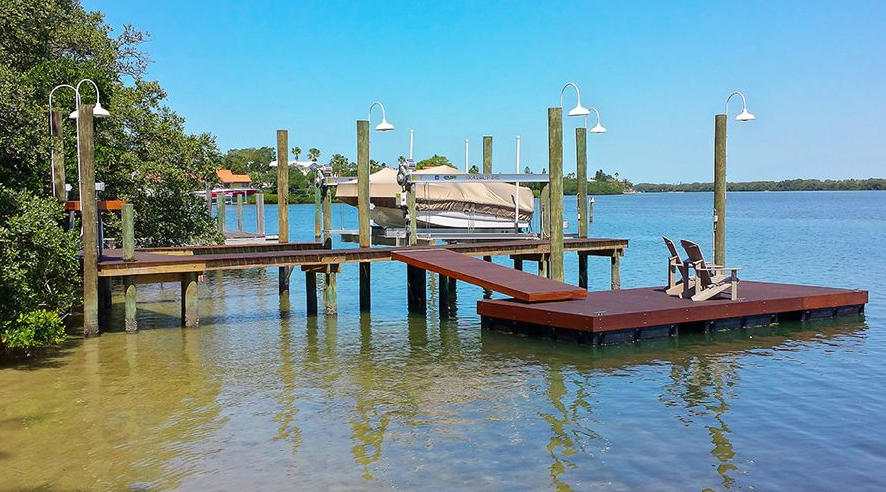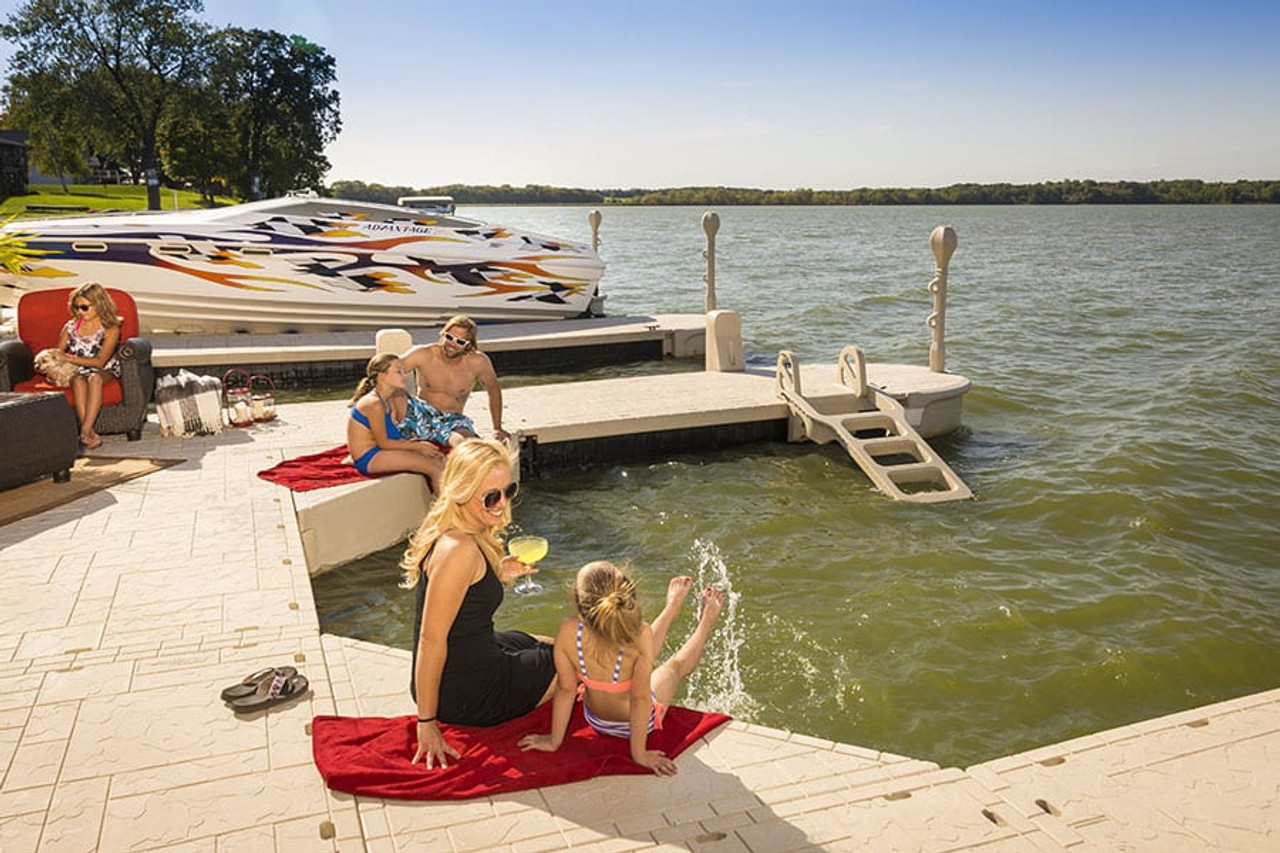Your Overview to Finding the Best Dock Company for Top Quality and Dependability
Your Overview to Finding the Best Dock Company for Top Quality and Dependability
Blog Article
Upgrade Your Beachfront With Sturdy Floating Docks
Updating your waterfront with durable floating docks can substantially enhance both capability and visual appeals, offering a versatile solution for different water tasks. These frameworks are developed to adapt to rising and falling water degrees, guaranteeing safety and security and accessibility throughout the periods. With a series of products readily available, including low-maintenance choices and typical wood, choosing the appropriate dock can complement your personal style and meet sensible needs. Understanding the nuances of setup and maintenance is critical for making certain longevity and efficiency. When making this investment?, what factors should you think about.
Benefits of Floating Docks
Floating docks deal a plethora of advantages that improve their appeal for different maritime applications. Unlike traditional fixed docks, floating docks rise and autumn with the trend, ensuring consistent access for watercrafts and watercraft no matter of environmental problems.
Furthermore, floating docks are much easier to mount and transfer, giving flexibility for seasonal or short-lived usage. Their modular style permits for modification to fit specific requirements, whether for exclusive marinas, domestic watersides, or industrial applications.
Additionally, floating docks create minimal disruption to the water atmosphere, protecting regional ecosystems and reducing the likelihood of disintegration. They likewise offer boosted security and stability for individuals, as their resilient nature uses a more flexible surface area than rigid frameworks.
Additionally, floating docks can help with a diverse array of tasks, such as angling, swimming, and leisure boating, making them an important property for waterside growth. Their adaptability and usefulness make floating docks a recommended selection for a selection of maritime jobs.
Selecting the Right Materials
Picking proper materials for floating docks is vital to their longevity, efficiency, and general effectiveness. When picking materials, think about factors such as environmental exposure, maintenance needs, and structural stability. Typical products consist of timber, plastic, light weight aluminum, and composite options, each offering unique benefits and disadvantages.
Timber, while aesthetically pleasing, calls for normal maintenance to stop rot and decay. Pressure-treated wood can boost toughness, however it may still catch water damages over time. Plastic drifts, typically made from high-density polyethylene, are resistant to deterioration and need marginal maintenance, making them an appealing selection for low-maintenance applications.
Light weight aluminum is one more feasible option, known for its stamina and lightweight buildings. It is resistant to rust and can endure harsh climate conditions, although it may be more costly than other products. Compound products integrate the ideal qualities of timber and plastic, providing a durable and low-maintenance choice that simulates the look of timber without the associated downsides.
Eventually, the option of material ought to straighten with the intended usage, environmental factors to consider, and budget restraints, making certain a resilient and practical floating dock that meets your particular requirements.
Installment Refine Summary
The successful setup of a floating dock depends on mindful planning and execution, making sure that it operates effectively in its desired atmosphere. The very first step entails examining site problems, including water depth, coastline functions, and dominating climate patterns, which will certainly inform the dock design and anchoring system.
Complying with the website analysis, the next stage is to prepare the floating dock parts. This includes assembling the frame, safeguarding drifts, and affixing any needed equipment. It is essential to guarantee that all links are robust and water-resistant to endure marine conditions.
Once the dock is assembled, the installation procedure commences with positioning the dock in the water. This can involve a crane or various other lifting equipment, especially for bigger structures. Appropriate positioning is essential for performance and security.

Upkeep Tips for Longevity
Routine maintenance is crucial for guaranteeing the long life and optimum performance of a drifting dock. To attain this, begin with routine inspections a minimum of two times a year, concentrating on the integrity of the dock's framework, including the flotation devices and attaching hardware. Search for indications of damage, corrosion, or wear, and resolve any type of problems immediately to protect against further deterioration.
Cleansing is one more important element of upkeep. Remove debris, algae, and barnacles from the dock's surface to prevent slippery problems and preserve visual charm. Use a light cleaning agent and a soft brush to avoid harming the dock's products.
In addition, guarantee that the dock is appropriately anchored and secured to withstand seasonal adjustments in water levels and weather. Inspect the anchoring system for stability and make changes as essential.
Enhancing Your Exterior Visual
To develop a visually attractive outside space, integrating a drifting dock can substantially enhance the overall visual of your waterfront building. Floating docks are not only useful however can likewise work as a striking centerpiece that matches the all-natural environments - dock company. Offered in various materials and designs, these docks can be personalized have a peek at this site to match your residential property's building design and landscape
The enhancement of attractive aspects, such as integrated illumination or fashionable barriers, better boosts the dock's aesthetic allure. Take into consideration utilizing all-natural timber finishes, which mix effortlessly with the setting, or choosing contemporary materials like light weight aluminum or composite outdoor decking that supply a sleek, contemporary look.
Purposefully putting planters or seating areas on or around the dock can create welcoming rooms that urge leisure and satisfaction of waterfront views. Furthermore, incorporating shades and structures that balance with your landscape will certainly create a cohesive aesthetic throughout your outside location.

Conclusion

Updating your waterside with resilient floating docks can significantly boost both functionality and visual appeals, supplying a versatile service for different water tasks. Unlike traditional fixed docks, floating docks rise and loss with the trend, guaranteeing regular availability for boats and watercraft regardless of ecological problems.Picking suitable materials for floating docks is vital to their durability, performance, and total efficiency.As soon as the dock is put together, the installation process begins with positioning the dock in the water.In check that recap, floating docks deal many advantages, including versatility to water degree adjustments and a variety of material choices.
Report this page